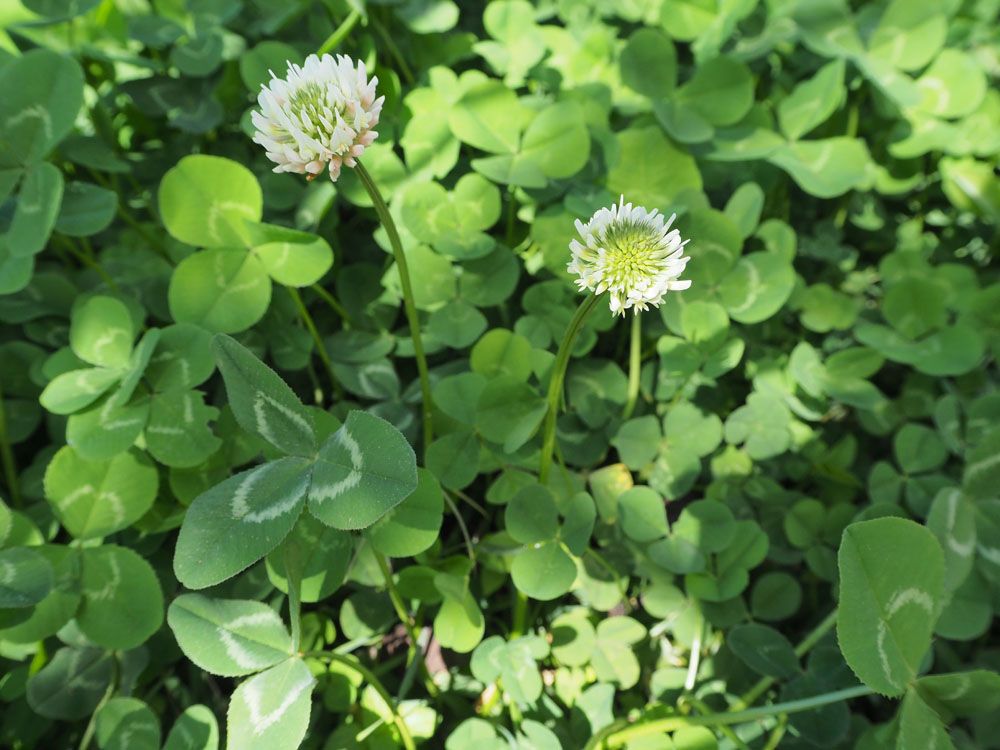
Clover
Clover: How to Eliminate and Control Clover in Turfgrasses
Clovers, notably Trifolium repens, have been used as a ground cover or animal feed plant for ages. Clover is a legume, which means it belongs to the same plant family as peas, beans, and peanuts. White clover, white Dutch clover, Dutch clover, and ladino clover are some of its frequent names. Despite its Mediterranean origins, it was brought to the United States during the colonial period.
Dandelion and white clover are two weeds found on grass that practically everyone recognizes. White clover is typically seen growing in low-fertility, low-maintenance areas such as roadside ditches, household lawns, and golf courses. Because it, like other legumes, supports rhizobacteria that fix atmospheric nitrogen into plant accessible nitrogen, white clover is particularly competitive in low fertility settings. We’ve had a lot of rain and rather cold temps this year, which has resulted in a lot of turfgrass growth. Because of the growth circumstances, fertilizer treatments are likely to endure less time than normal, providing an ideal environment for clover to invade.
Benefits of Clover
White Dutch clover was common on lawns prior to World War II. In fact, it was formerly a common element in grass seed mixtures. However, following the introduction of petrochemical-based weed herbicides, these compounds destroyed weeds as well as clover. Since then, the grass plant has been regarded as a weed, despite the fact that it provides several advantages to lawns. Here are five reasons why you should reconsider removing clover from your lawn—the advantages of this little plant may surprise you.
Nothing is more depressing than passing through a patchy brown yard during the summer drought. That is why clover is so beneficial. Because of its strong roots, it stays green throughout even the driest times, outperforming many cold-season types of grass [cool season grasses blog] and providing the aesthetically appealing look of a healthy lawn. Clover is tough, and its vigor actually suffocates other weeds. If your mower is sick of pulling up those pesky, difficult-to-kill weeds, clover may be the answer. Growing clover makes it difficult for common lawn weeds to flourish, so the lawns you mow may be weed-free and lovely.
Management
Although autumn broadleaf herbicide sprays are particularly successful for eliminating white clover, many homeowners and grass managers cannot wait until the fall to begin weed control. Herbicides with the active chemicals triclopyr, or quinclorac have great performance for reducing white clover in household lawns.
You may manually remove clover from tiny spots. With a spade, gently loosen the dirt and pull the clover out, roots and all. If any roots are left behind, the clover will regrow. Clover may be killed by depriving it of all oxygen and sunshine. Place plastic sheeting or a trash bag over the spot, fastening the corners with pebbles to keep it from flying up. This should eliminate the clover within a few weeks. Keep in mind that this method will destroy any vegetation that goes beneath the plastic.
